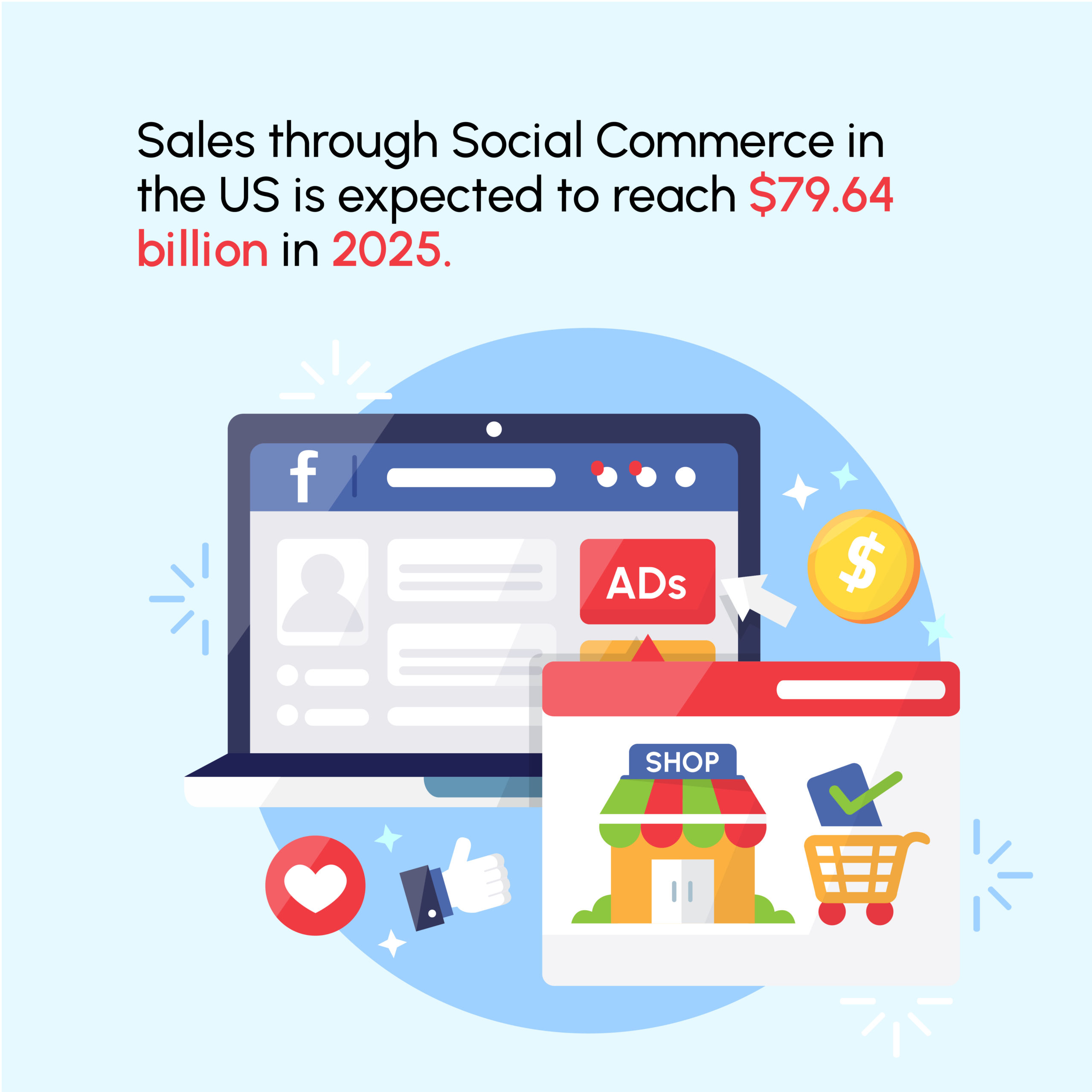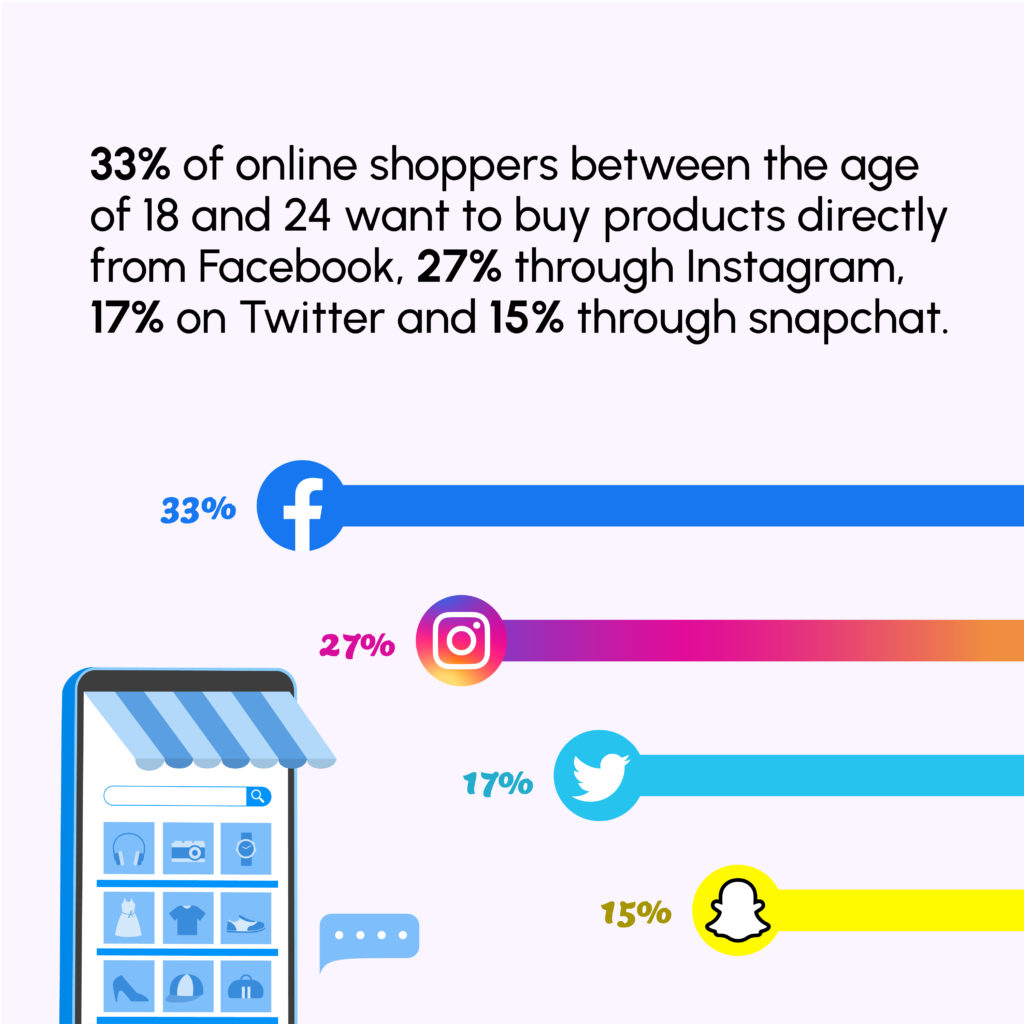
The rise of Social Commerce and how major social platforms are gearing up to integrate eCommerce functionalities
Every technology matures at some point of time, and it is essential to innovate and evolve the technology as it inches towards a point of diminishing returns; eCommerce is no different. eCommerce has seen a steady rise through the years in the past decade. The global pandemic has further reinforced the position of eCommerce as the most popular sales channel. But it is slowly moving towards a point where it needs to innovate to reach out to the customers in radically different ways.
Challenges with conventional eCommerce
Necessities and opportunities determine the trajectory of evolution of any technology. eCommerce has had a few challenges.
It does not necessarily provide the space for customers to interact with the brands; so, it is hard to build brand loyalty as customers are spoilt for choice. Finding new customers, bringing them to an eCommerce site, learning their preferences and serving them with the right products to achieve conversion is a challenge. Marketing efforts go into achieving that. In other words, brands need to find customers with great effort. There is no readily available pool of customers that businesses can tap into. There is limited scope for personalization and providing an immersive experience.
Social Media offers what eCommerce is missing
On the other hand, social media has become a part of the daily life. It is the place where people hang out and consume digital content, interact with brands and express their preferences. While people do not necessarily look to buy things through social media, the foundation for achieving sales is already there is social media. As traditional retail stores suffered due to lockdowns, there was an opportunity to reach out and serve those customers. Social Commerce helped businesses fill the gap left by the brick-and-mortar stores.
What is Social Commerce?
Social Commerce is the amalgamation of social media and eCommerce. It integrates the strengths of social media – namely a readily available pool of potential customers, space for interaction with brands, immersive experience and massive scope for personalization, with the strengths of traditional eCommerce – namely online reach, digital payments, ability to find products and purchase from an online shop.
Through social commerce, marketers can: Take brands to the customers through online content that can be interactive and immersive Stream product launches and product-related content Promote the brand and products through targeted ad campaigns and through influencers Push relevant offers to customers Enrich the customer experience through various challenges and other ways to engage with the customers.
The rise of Social Commerce
Social Commerce has grown exponentially after the pandemic. The rise of social commerce started first in China, with the introduction of an array of features in social media ecosystems specific to China, such as WeChat.
The WeChat ecology, for instance, includes subscription messages, campaigns, direct customer service interaction and content marketing, WeChat Moments and community advertising via WeChat Ads. The platform offers comprehensive social commerce features through WeChat Stores, WeChat Mini-Programs and WeChat Good Product Circle, and is now incorporating live streaming features as well. This paves way for a more targeted approach towards marketing brands trough social commerce. It was further capitalized by other platforms such as XiaoHongShu and Pinduoduo.
These changed the way how people in China buy things online. With Social Commerce, they could find products and brands, buy them, pay for them, get customer service and interact with brands, all within these social media/messaging ecosystems.
These trends were embraced by the businesses and customers in the US. Social Media giants are quickly adapting to the changing ecommerce landscape and are integrating powerful Social Commerce features to meet the expectations of the customers.

Some statistics
- The global market size of social commerce was $474.8 billion
- Generation Z discovers 52% of brands only through social media
- 62% of responders tell friends on social about local deals
- Women between the age of 25-54, who are the core audience of Pinterest, make 80% of purchase decisions within U.S. households
- 92% of marketers in the US are using Facebook ads to promote their brand and special offers
- 31% of online shoppers say they are using Facebook, Instagram and Pinterest for searching and buying products.
- 35% of users follow brands on social media to decide when they should shop next.
Initiatives by social media platforms to cater to social commerce
With the rapid rise in social commerce in China, the social media giants have woken up to the opportunities it presents, and are introducing a plethora of social commerce features in their platforms. Following are some of the social commerce platforms and how they are gearing up for social commerce.

Twitter has a strong potential for integrating social commerce features. It is one of the most popular platforms where people get to interact with the brands directly. Twitter has partnered with a handful of businesses to test the feature. It has introduced a ‘shop module’ that enables businesses, brands and retailers with business accounts to create detailed profiles, add product listings in their own profile and allow customers to directly shop from it.
Twitter is testing its social commerce features for customers in the US, limited only to iOS users in English. They will see a carousel of product listings on the brand profile. They can purchase it directly within twitter, without leaving the platform. Customers will be able to enjoy a good user experience with their ability to purchase and interact with the brand in the same platform, providing them with a more seamlessly integrated social commerce experience. The platform further incorporates typical ecommerce features such as option to revisit purchased items and act upon them.
Facebook/Instagram/WhatsApp
Facebook is in a unique position to provide a great social commerce experience. The company owns two of the most popular social media and one of the most popular messaging platforms. Instagram and Facebook have had Social Commerce features incorporated in them since 2016. So, they are more mature and better positioned to capitalize on the rising demand for social commerce. Facebook further reinforced these features with a recently added ‘Facebook Shops’ feature that has enabled full-fledged online shopping experience in the social media.
Facebook and Instagram offer businesses the ability to put up online shops and display personalized ads based on people’s preferences and demographic profiles, and get influencers to bring new customers to the store. They integrate content delivery relevant to the products and services and provide an immersive experience to the users based on their personal likes and preferences. They enable customers to interact with the brands and the content in many ways.
The company is now leveraging the power of personal messaging through WhatsApp to integrate further social commerce features in their ecosystem. Now, retailers and brands can create business account, deliver catalogues and handle interactions with customers on WhatsApp. So, these three platforms come together to provide users a comprehensive social commerce experience.
Tiktok
Tiktok is an app that has enjoyed huge amounts of success of late. The platform collaborates with Shopify to integrate storefronts designed on Shopify and to link the in-feed shoppable video ads to targeted user groups. The platform enables tracking and ability to optimize the campaigns.
Pinterest is a visually rich platform that displays users relevant content depending upon user preferences. It allows users to discover content, and this makes it ideal for the platform to influence purchase decisions and discuss with fellow members to get feedback. It helps users discover brands. The social commerce features in this platform are still in their infancy.
Twitch
Twitch is the most popular live streaming platform. By its very nature, Twitch creates space for influencers to produce and post content and provides scope for live interaction with customers. Twitch provides an integrated checkout feature that allows gamers to send alerts and sell products while live streaming games. Sponsored live streams help promote and build brands. Experimental efforts have led users to participate in customized interactive exercises related to the brands and helped the brands establish a close connection with the customers.


